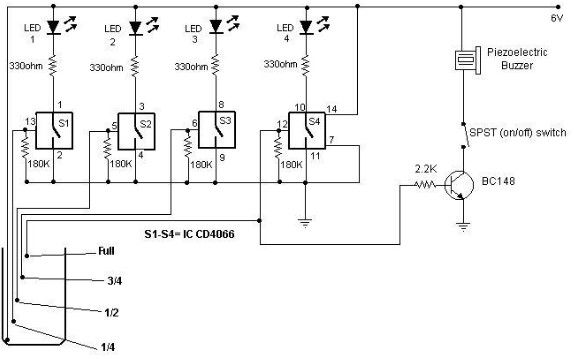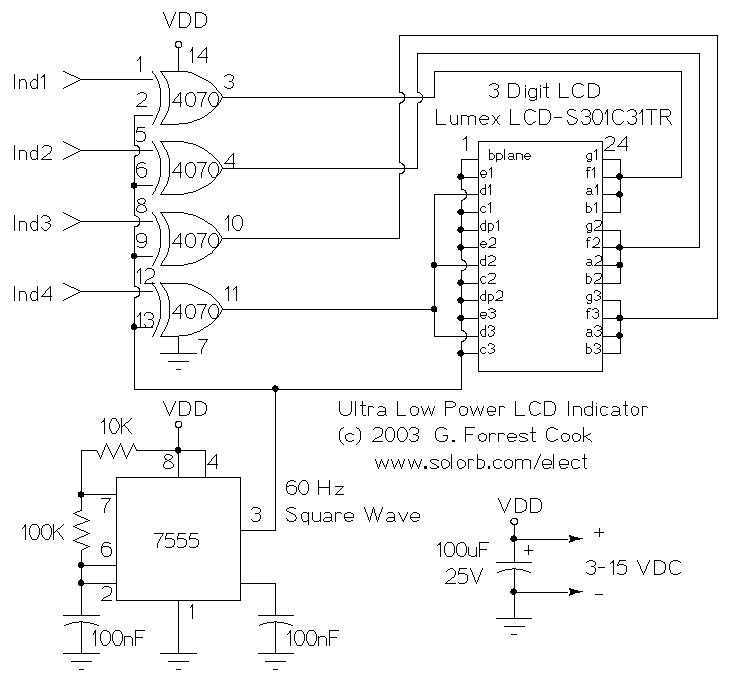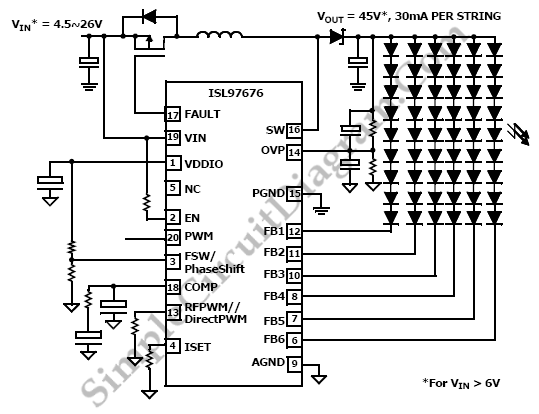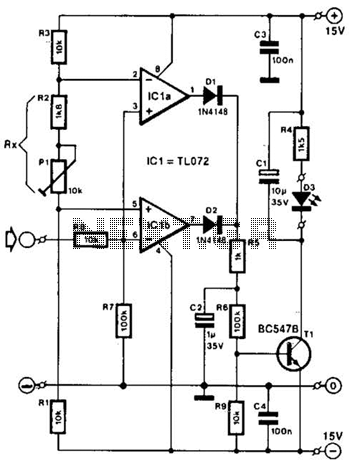
Phase indicator
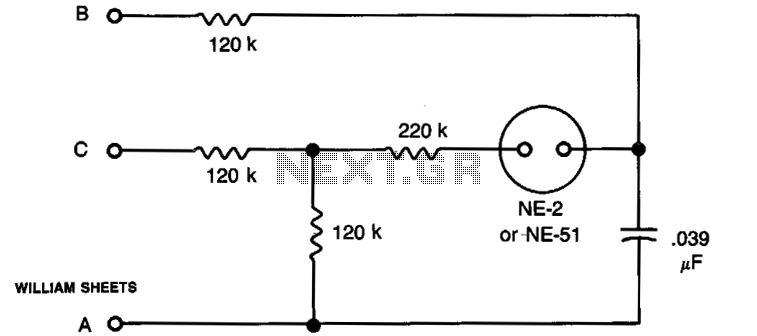
The circuit offers a straightforward method for identifying the phase sequence of a 3-phase 120 V source utilized in synchro applications. Terminals A, B, and C are connected to the three terminals of the source under examination. If the neon bulb illuminates, it is necessary to swap any two leads; the bulb will then turn off, indicating that A, B, and C are in the correct sequence. Additionally, if power is lost on any one line, the neon bulb will light up. This functionality can be advantageous for monitoring purposes.
The described circuit is a phase sequence indicator designed for use with a 3-phase 120 V electrical system. It consists of three input terminals labeled A, B, and C, which connect directly to the three phases of the electrical source. The primary component of the circuit is a neon bulb, which serves as a visual indicator of the phase sequence.
In operation, when the circuit is connected to the 3-phase source, the neon bulb remains off if the phases are connected in the correct sequence (A, B, C). However, if the phases are connected incorrectly, the neon bulb will illuminate, signaling that a phase swap is necessary. This allows the user to easily identify and rectify the incorrect phase connections.
The circuit's design includes a simple mechanism for troubleshooting. If the neon bulb lights up when the phases are connected, the user can interchange any two leads (for example, A and B) to test the sequence. If the bulb turns off after the interchange, this confirms that the sequence is now correct. Conversely, if power is lost on any one of the phases, the neon bulb will also light up, serving as an important alert for maintenance or monitoring purposes.
This circuit is particularly useful in industrial and commercial settings where 3-phase systems are prevalent, providing a reliable means to ensure proper phase sequence and system functionality. The neon indicator not only enhances safety by preventing potential equipment damage due to incorrect phase connections but also aids in the efficient monitoring of electrical systems.The circuit provides a simple means of determining the succession of phases of a 3-phase 120 V source used in synchro work. Terminals A, BT and C are connected to the three terminals of the source to be checked. If the neon bulb lights, interchange any two leads; the light then extinguishes and A, B, and C indicate the correct sequence.
If power on any one line is lost, the neon bulb will light. This feature may be useful for monitoring purposes. 🔗 External reference
The described circuit is a phase sequence indicator designed for use with a 3-phase 120 V electrical system. It consists of three input terminals labeled A, B, and C, which connect directly to the three phases of the electrical source. The primary component of the circuit is a neon bulb, which serves as a visual indicator of the phase sequence.
In operation, when the circuit is connected to the 3-phase source, the neon bulb remains off if the phases are connected in the correct sequence (A, B, C). However, if the phases are connected incorrectly, the neon bulb will illuminate, signaling that a phase swap is necessary. This allows the user to easily identify and rectify the incorrect phase connections.
The circuit's design includes a simple mechanism for troubleshooting. If the neon bulb lights up when the phases are connected, the user can interchange any two leads (for example, A and B) to test the sequence. If the bulb turns off after the interchange, this confirms that the sequence is now correct. Conversely, if power is lost on any one of the phases, the neon bulb will also light up, serving as an important alert for maintenance or monitoring purposes.
This circuit is particularly useful in industrial and commercial settings where 3-phase systems are prevalent, providing a reliable means to ensure proper phase sequence and system functionality. The neon indicator not only enhances safety by preventing potential equipment damage due to incorrect phase connections but also aids in the efficient monitoring of electrical systems.The circuit provides a simple means of determining the succession of phases of a 3-phase 120 V source used in synchro work. Terminals A, BT and C are connected to the three terminals of the source to be checked. If the neon bulb lights, interchange any two leads; the light then extinguishes and A, B, and C indicate the correct sequence.
If power on any one line is lost, the neon bulb will light. This feature may be useful for monitoring purposes. 🔗 External reference
